Updated: 09-Jan-2020
This company was founded by a decision of the French Parliament in 1923 to make certain projects economically unsuitable for private companies.
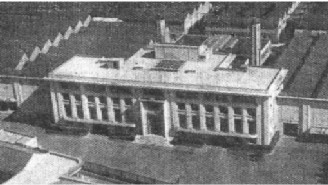
“Arsenal Entrance”
-The company was called "L'Arsenal d'Aeronautique" and was situated in Chatillon-sous-Bagneux, Sena.
-It went through vicissitudes of dropouts and starts until 1935, when it appears with the name "Arsenal" that responds to three functions, according to the spirit of its creators:
-First, to study and carry out that what the industry could not do because of financial risks and that could also be done in complete secrecy.
-Second, to train the engineers of the Aeronautical Society from the Polytechnic or ENSA, updating their knowledge.
-And third, establishing the "technical truth" with the assistance of high-quality, foreign counsels.
-In France, Arsenal was regarded as the "Temple of Technics".
-For example, coupling the most powerful, existing engines with their transmissions was difficult to execute.
-They had the "engine room" where the 8,000 CV engines were shown.
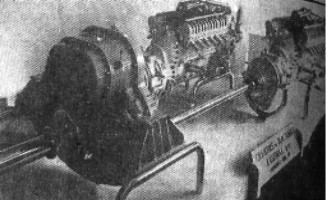
“Testing at Arsenal”
-In the picture we see two parallel, but offset, 2,000 CV, 12H engines coupled through a common gearbox giving 4,000 CV the 24H engine.
-The used transmissions were the famous "Vernisse" with CV joints. This device was named after J. Vernisse, Arsenal's general engineer and director.
-They also coupled two 2,160 CV Hispano Suiza 12Zs, one behind the other, independently driving two coaxial, contra-rotating propellers.
-This system was installed in Arsenal's heavy fighter aircraft, VB-10.
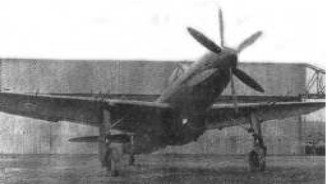
"Arsenal VB-10"
-The flagship products were the 12H and 24H engines.

"Arsenal 24H"
-The VB10 also had the 24H installed, just like the "Noroit". For the VG-33, they planned two HS 12V.
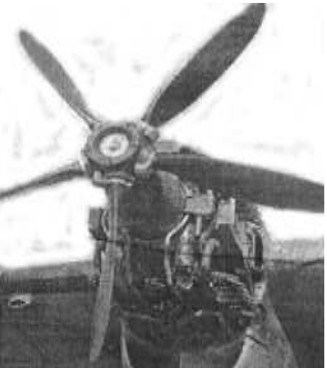
"Arsenal 24H in Noroit"
-The 12H was developed from the German Jumo 213, since after the Armistice of WWII, about 300 engines were recovered from Germany and they called this new engine Ars-12H. They were designed to power from 1,750 CV to 2,100 CV and initially to be used by the amphibian Nord 1402 "Noroit". Until 1950, 23 aircraft were manufactured.
-This engine had gasoline injection and was overpowered because of a turbocharger and adding water/methanol. The 12K version reached 2,650 CV.
-The 12H engine was made of two Jumo-213s in tandem with a Vernisse transmission. The Jumo engines were from Junkers AG.
-The 24H were achieved by coupling four Jumo 213 cylinder-blocks, united in a central crankcase casting. It was a huge, massive engine.
-But it turned out to be a disproportionate solution to an existing problem. With the coupling of two or more of these engines Arsenal proposes to achieve engine powers of 8,000 CV and even 16,000 CV, which at the time was the greatest power ever achieved.

-"Arsenal 2 x 24H, tandem"
-There is a new change in the company. It is absorbed by the "Societe Nationale de Constructions Aeronautiques" and eventually it belongs to SFECMA.
-Just after WWII in the postwar period, with information fetched from Germany, Arsenal develops the Arsenal 5501 missile, a pulsejet that is a copy of the German V-1.
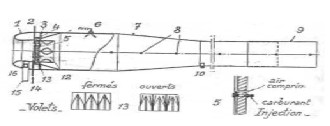
"Pulsejet diagram"
-In the sectional diagram we see the great similarity with the V-1 pulsejet. In fact it was based on the German Argus 109-014. It had the same inlet shutters. The prototype delivered 170 kg of thrust, but the numbers went continuously up to 330 Kgs.

"Pulsejet de Arsenal"
-It was intended for the Ars-5501 missile measuring 4.35 meters wide and 6 meters long. It was catapulted from a ramp with the help of gunpowder rockets that gave 4 tons of thrust for a second and a half to give an acceleration of 10 g. for twenty meters.
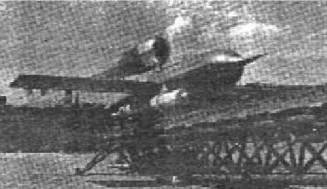
"Ars-5501 on a launching ramp"
-SFECMA continued its trials and manufacturing. SNECMA also experimented with pulsejets in 1951.
-From appendices A4/6 and A6/6: At the 1946 Paris Air Show, the high-power 24H piston engine was presented.
-In a photograph taken at that event, we see two superchargers. One feeds the upper cylinders and the other the lower ones.
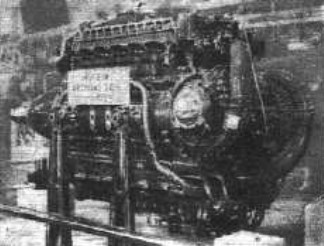
"The Arsenal 24H in Paris"
-In the 1950s there appeared articles in the French "Les Ailes" magazine about achievements of the French state-owned company, officially called "L'Arsenal de l'Aeronautique".
-Now we show a new photograph of the 12H derived from the Junkers “Jumo 213”
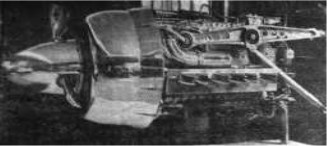
"Open exhibition model"
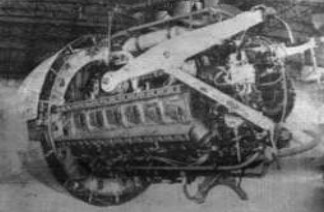
"The 12H for the Nord 1402"
-From appendix 9: In the main text it is mentioned that this public company was building projects that a private company could not resist.

"Arsenal VB 10-02"
-Two engines in tandem, one in front of, and another behind the pilot. In this particular case the transmission to the contra-rotating propellers is Vernisse-Badie.
-The VG-10 aircraft's transmission was designed by Vernisse-Galtier.
NOTE: "Les Ailes" was a newspaper format magazine that came out very often (weekly?). The offset illustrations do not allow to reproduce them more perfectly.

"Two 12H engine tandem coupled with Vernisse transmission"
Engines of ARSENAL
Model: 12H

"The 12H for the Nord 1402"
Model: 24H

"The Arsenal 24H in Paris"


